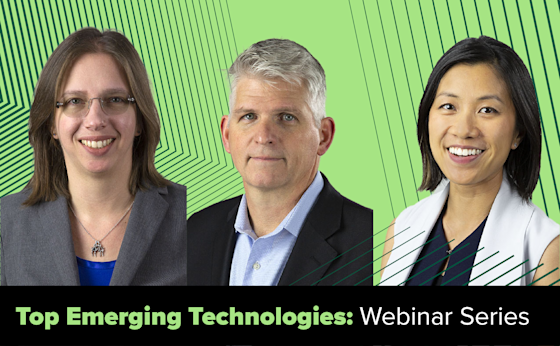
In our 35-criterion evaluation of core CRM providers, we identified the 11 most significant ones and researched, analyzed, and scored them.


Get access to a single webinar that is currently outside of your subscription.
Price: $300 (USD)
Partner with Forrester Research to get access to webinars, insights and frameworks aligned to your role. Shorten the time between a great idea and a great outcome, helping your teams win in the age of the customer.
CRM is experiencing a second wave of adoption aimed at transforming engagement and business outcomes across an enterprise. Enterprises use CRM to support customers throughout their end-to-end journeys – from discovery to purchase, onboarding, use, service, and success. As a result, CRM investments for targeted retention, loyalty, and revenue growth become a C-level business imperative and break CRM out of its traditional organizational focus.
This elevated importance of CRM drove us to assess CRM vendors via the Forrester Wave™ evaluation. This webinar highlights the findings of two Wave evaluations:
Key takeaways:
Vendors mentioned: Creatio, Freshworks, HubSpot, Microsoft, Oracle, Pegasystems, Salesforce, SAP, SugarCRM, Zendesk, and Zoho
Target audience level: intermediate and advanced
You'll receive an email with dialing and Webex instructions prior to the Webinar.
See the Webinar FAQs for answers to technical and other Webinar questions.

In our 35-criterion evaluation of core CRM providers, we identified the 11 most significant ones and researched, analyzed, and scored them.

In our 31-criterion evaluation of CRM suites providers, we identified the nine most significant ones and researched, analyzed, and scored them.

Connected product engineering services providers help their clients imagine, design, test, build, sell, or maintain connected products. These connected products combine a physical product with supporting apps and digital services and can include anything from a connected toothbrush or coffee machine to software-defined vehicles and smart factories. In this webinar, we look at our most recent evaluation of providers in this market.Key takeaways: Learn which connected product engineering services providers we evaluated in our research, and how they performed.Understand the broad range of tasks a connected product engineering services provider may be called on to tackle. Explore when and how your organization might want to engage with a connected product engineering services firm.Target audience level: all levels

Accelerate innovation with deeper insights about why quantum security is important, when it will likely pay off, and how others are using it. Learn the latest expert insights, practical tips, and key steps you and your team can take with this rapidly evolving technology. Quantum security can potentially protect sensitive information and secure communications against quantum attacks over a long-term horizon. Join this session to learn more about how this technology will mature and steps you can take to maximize your investment in it.Key takeaways: Learn about the threats posed by quantum computing to current cryptography.Understand the development of quantum-safe encryption methods.Explore research and advancements.Target audience level: all levels

Forrester’s data and research consistently show how companies that focus resources and strategy on delivering value to customers outperform their competitors on several business measures. Ensuring that B2B customers receive the best postsale experience requires proactive engagement through customer success and customer marketing, as well as personalized and effective reactive engagement whenever they encounter a problem or need support. However, once OpenAI released GPT-4, everything everyone thought they knew about great customer service strategy and execution got turned on its head. Customer service and support teams have the most to gain — or change — through the use of generative, predictive, and agentic AI.Please join Laura Ramos, VP and principal analyst at Forrester, as she explores the latest trends impacting B2B customer service and how generative, predictive, and agentic AI stand to redefine the purpose, role, and results of teams that support B2B customers postsale.Key takeaways: Learn what’s unique about B2B customer service and the changing opportunities that Forrester sees for clients in this space.Discover the top challenges that B2B customers face when delivering effective, differentiating support that truly impacts the customer’s experience.Explore how AI will help solve those challenges while also permanently changing the role and scope of customer service for companies that sell highly considered products and services.Target audience level: intermediate

Disruptive technologies are a double-edged sword for environmental sustainability, offering both crucial enablers and significant challenges. On the positive side, technology innovations accelerate energy and resource efficiency, aid in climate adaptation and risk mitigation, monitor crucial sustainability metrics, and even help in environmental conservation. However, the necessary compute power, volume of waste, types of materials needed, and scale of implementing these technologies can offset their benefits.In this webinar, we discuss our latest report, which explores the dual roles of six disruptive technologies, and illustrate the beneficial use cases to guide sustainability and technology leaders on how to use them for good.Key takeaways: Explore the case studies and examples on leveraging disruptive technologies to focus on optimization.Learn about the disruptive technologies that will make the most impact in sustainability in 2025.Target audience level: beginner and intermediate

In today's fast-paced digital landscape, businesses must adapt to ever-evolving technological demands. Join us for an insightful webinar where we delve into the importance of business-optimized networks and how they can transform your organization's efficiency and productivity.Key takeaways: Understand business-optimized networks — what they are and why they matter.Discover benefits of optimization — enhanced performance, security, and scalability.Explore real-world applications — case studies and success stories.Learn implementation strategies — practical steps to optimize your network.Target audience level: beginner and intermediate

Today’s public sector environment changes daily. Tech leaders in government groups are pushed to maximize the budget they have. The most logical place to start? Portfolio rationalization. Techniques such as project prioritization, resource allocation, and redundancy elimination are essential to streamline operations and enhance overall efficiency. Although these steps will help drive down cost — the goal is creating a more adaptive platform that is responsive to changing needs and capable of integrating advanced technologies, including AI. This AI-ready framework enables agencies to leverage data-driven insights for better decision-making, predictive analytics for future planning, and automation to reduce manual workloads, ultimately driving innovation and delivering superior outcomes for their constituents.Key takeaways: Learn how to assess and rank projects based on strategic importance and resource availability to ensure optimal portfolio composition.Discover techniques to streamline operations by removing overlapping or unnecessary initiatives, thereby improving efficiency.Gain insights into effective resource management strategies that enhance operational effectiveness and drive better outcomes for government agencies.Target audience level: beginner and intermediate